
Welcome to the third newsletter from the Mid Copeland GDF Community Partnership. I’m delighted to take over in the role of Partnership Chair for the next 12 months after Mark Cullinan stepped down last month.
On behalf of the Partnership, I’d like to thank Mark for all of his work and guidance during that time on this important project.
A little about me – I’m passionate about this area, its people and the caring communities we have here. I live in Holmrook with my wife and three children where I’ve run my own milk delivery business for the last 21 years.
I’m Chair of Governors for both Gosforth C of E School and Kirkland Academy and have been for the past 18 years. I’m also Vice Chair of Drigg and Carleton Parish Council and a trustee of Drigg Young Farmers’ Club.
I’m currently councillor for Gosforth and Seascale ward on Copeland Council and will be the councillor representing Millom Without ward on the new Cumberland Council from April next year.
As Chair of the Mid Copeland GDF Community Partnership, I’ll continue to help take forward the conversations which have started about whether Mid Copeland is the right place for a Geological Disposal Facility (GDF) – what it could mean, listen to questions, discuss concerns and also look at the opportunities.
Community Partnerships are long-term groups made up of local people, the GDF developer and local authorities to consider the possibilities of hosting a GDF. A GDF is an underground facility designed to safely and securely dispose of higher activity radioactive waste.
Mid Copeland GDF Community Partnership was the first to be formed in the country in November 2021 with a Search Area which includes the electoral wards of Gosforth & Seascale and Beckermet.
We’re still in the very early stages of the GDF programme. If a suitable site is found in Copeland – a process which could take 10-15 years – a decision to develop a GDF here in Mid Copeland could not be taken until the community in the electoral wards directly affected has had a say and taken a positive Test of Public Support.
This means the residents in the area around any proposed development will make the decision on whether to go ahead and the Community Partnership will ensure that the community has all the relevant information they need along the way.
We’re in the process of developing our membership further to reflect the local community; we’ve now awarded a total of £283,553 in Community Investment Funding to local projects and good causes as part of the GDF programme (with more to be announced soon) and we’re continuing to hold events – looking ahead now to our third round in Mid Copeland.
A marine geophysical survey off the coast in Mid and South Copeland has now started. This survey (which doesn’t involve digging into the ground) will give us important data so that we have a better understanding of the deep geology beyond the coast and whether it could be suitable for geological disposal.
All of the above – and more – in this newsletter.
As always, if you have any further questions or would like to get in touch with us – our contact details are at the end of the newsletter and there is further information on our website: https://midcopeland.workinginpartnership.org.uk
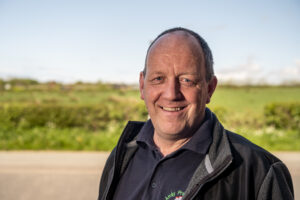
Andy Pratt, Chair – Mid Copeland GDF Community Partnership
Over £210,000 awarded to community projects from GDF programme
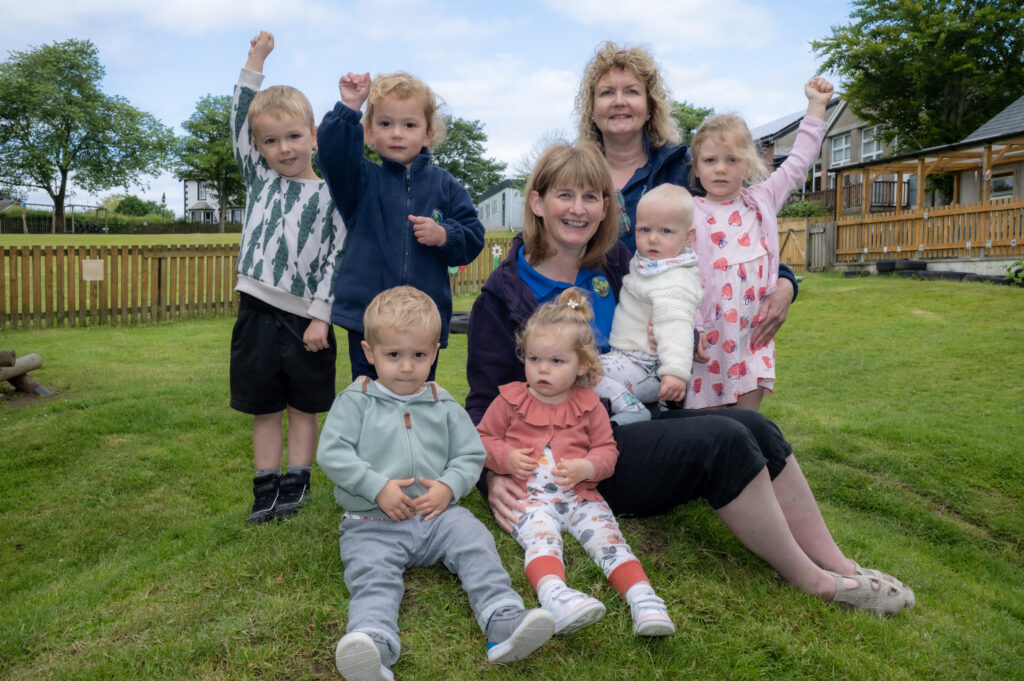
Gosforth Nursery are delighted to be able to provide more facilities for the children
Seven community projects have been awarded grant funding in Mid Copeland as the area takes part in the search for a suitable site for a Geological Disposal Facility (GDF).
A total of £218,054 has been awarded in the latest round of Community Investment Funding, plus one project from a previous panel.
The projects to benefit are:
- £84,838 to revamp Beckermet Play Area with new equipment
- £20,845 for Thornhill Social Club to improve access and provide a refurbishment plan
- £49,114 for Gosforth Nursery and Out of School Club to provide an outdoor classroom, new equipment, resurfacing and fencing
- £42,397 to Friends of Gosforth School to replace the Adventure Trail, provide new outdoor seating and an outdoor reflection area
- £1,590 for Calderbridge and Ponsonby Village Hall to provide a structural survey and energy audit
- £5,900 to Gosforth Agricultural Show for hire of a new arts & crafts marquee, plus purchase of tables and chairs which can be used by the community
- £8,000 Gosforth Library Link for a new computer and some building refurbishment
- £5,370 for Seascale Community Library to fund an architect’s report into options to transform it into a community hub
Formation of the Mid Copeland GDF Community Partnership has given access to £1million Community Investment Funding per year from the GDF programme as discussions progress around what a facility could mean locally.
Andy Pratt, Chair of the Mid Copeland GDF Community Partnership, said: “A total of £283,553 has now been awarded for projects in Mid Copeland since the Community Partnership formed.
“It’s fantastic to see examples of how this funding is now starting to help make some transformations to facilities, play areas and community groups across Mid Copeland which are really important to people.
“I would urge people to consider what they could do locally with this funding and have a chat with the Community Investment Funding team to see what is possible.”
Gosforth Nursery and Out of School Club provides places for around 50 children in their full day care and nursery facilities, with many others attending out of school clubs. The funding will provide a much-needed second outdoor classroom for the youngsters, plus new equipment.
Manager Gillian Jackson is delighted with the funding. She said: “The importance of playing and learning in the outdoors is promoted at the nursery for children of all ages. This funding will allow us to further develop and enhance the outdoor provision we offer to children in the local and wider community and continue to promote the quality of the health and wellbeing of all those working and playing at our setting.”
Gill Hewitson, secretary of Thornhill Social Club, said their funding would help the committee do some resurfacing work outside and provide access for disabled people.
“It will also help us to draw up plans to modernise the building inside and upgrade the facilities. We’ve done a lot ourselves so far but we’re absolutely delighted with this funding as it will help us to get a refurbishment plan so we can hopefully open up more, particularly in the afternoons for meetings and other events,” she said.
Julie Nugent, Chair of Beckermet with Thornhill Parish Council, says plans for a revamp of the village play area in Beckermet can now become a reality.
A large piece of equipment had to be removed as it had fallen into disrepair after 22 years. The children have been involved in choosing their preferred equipment which they would like to see in the new facility
“This funding is really going to make a huge difference to the children as there is not much equipment left now. It’s going to be a fabulous play park which will be for younger children and juniors,” she said.
David Halliday, a trustee of Seascale Community Library and Chair of the Parish Council, said: “We’re delighted the money has been awarded to this exciting project. The building has a lot of potential and the funding will provide us with an architect’s report with options to turn it into a community hub with meeting rooms and a library.”
Deep geology beyond the coast is being considered for siting the underground elements of a GDF. This means a surface facility on, or near, the coast would provide access to a disposal area deep in rock beyond the coast.
Watch two videos here:
Gosforth Nursery receives funding through the GDF programme
Funding awarded for Beckermet Play Area:
For further information on Community Investment Funding go to: https://midcopeland.workinginpartnership.org.uk/community-investment-funding/
Feedback from the ‘Ask the Experts’ events
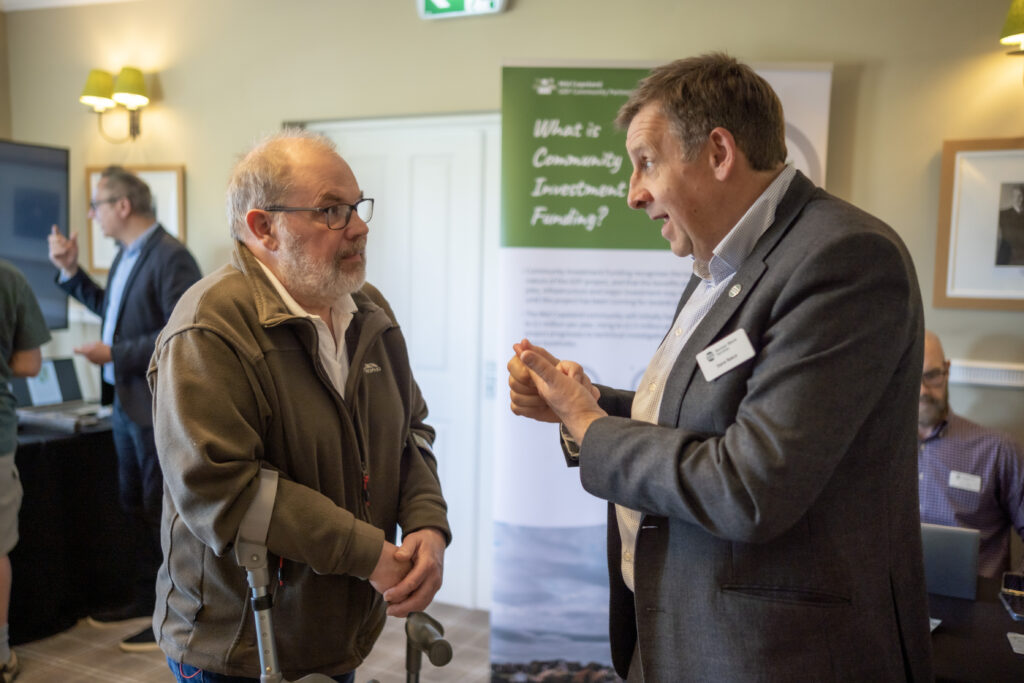
The Partnership held a series of events in May which were attended by over 100 people across five locations in Drigg, Seascale, Gosforth, Beckermet and Thornhill.
The events focused on what a Geological Disposal Facility could mean – with experts answering questions on the subjects which people at previous drop-ins had raised as areas they would like to hear more about.
This included geology, the siting process for a GDF and Community Investment Funding.
Gillian Johnston, Community Engagement Manager for the Community Partnership, said: “I’d like to thank everyone who came along to the events and gave us their views, getting involved in discussions on a range of subjects.
“There were over 160 questions asked during that time and around 75 statements given from people summing up their views.
“We had a lot of discussions and questions were raised around construction and siting, Community Partnership, geology, nuclear waste inventory, the GDF developer role and the £1million Community Investment Funding.”
To see all of the questions asked and statements made from members of the public during the events please click on the website
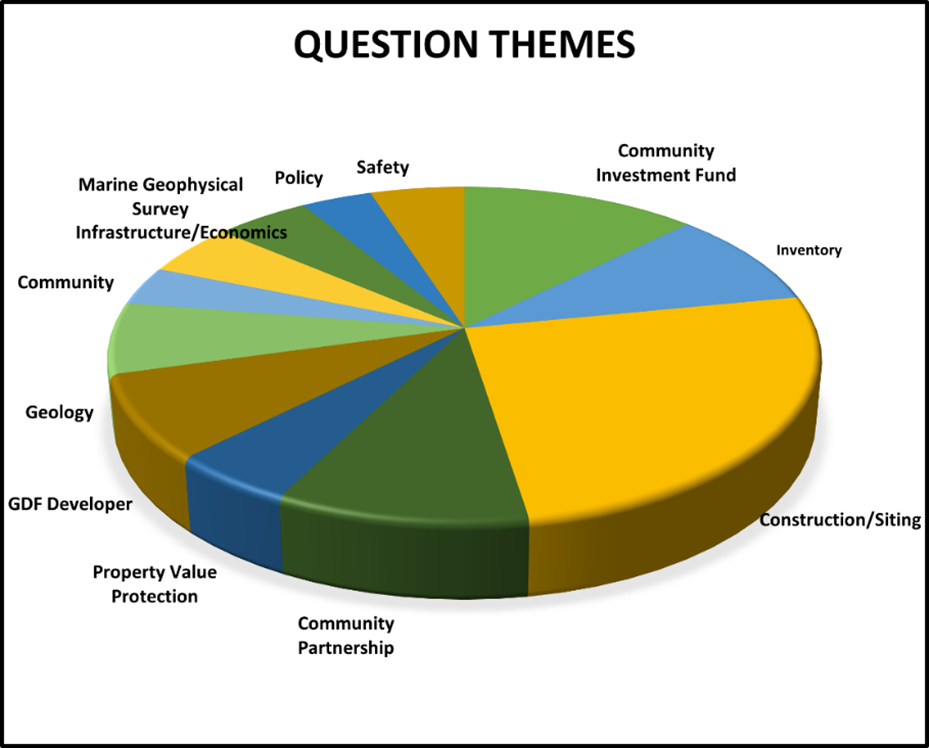
Penny Harvey, member of the Committee on Radioactive Waste Management (CoRWM) – which provides independent advice to government – recently attended events in Mid Copeland and provides her thoughts and feedback:
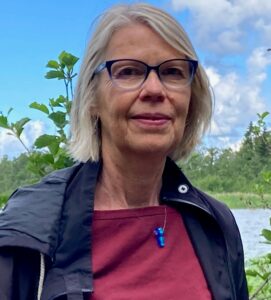
Over the past few months, I have had the opportunity to visit several of the engagement events that the GDF developer team have run with the newly formed Community Partnerships in my capacity as a member of CoRWM.
CoRWM was set up, back in 2003, originally to make recommendations for the long-term management of the UK’s higher activity wastes that would both protect the public and the environment and inspire public confidence. Following the completion of that original work, in 2007 it was reconstituted to provide ongoing independent scrutiny and advice to government on all aspects of nuclear waste management. The Committee recommended geological disposal as the best available option for the long-term management of higher activity nuclear waste.
I am also a Social Anthropologist with a particular interest in analysing the social dynamics of large public infrastructure projects.
I appreciated the opportunity to join the events in Seascale and in Thornhill where I met members of the Mid Copeland GDF Community Partnership, and the residents who visited the exhibit.
There were many questions and concerns that people wanted to discuss with the GDF developer team, including potential impacts on local property values and how considerations of fairness would be monitored. There was also anxiety about the seismic surveying that will be carried out offshore, with a focus on environmental concerns and data transparency.
The GDF project unfolds on multiple timescales. In the short-term there are electoral cycles and the shifting boundaries of local political wards in West Cumbria which create a sense of instability. But this is an exceptionally long-term project that will take around 150 years to complete.
It involves the licensing, construction, operation, and closure procedures that all require multiple regulatory approvals and the participation of several generations of residents in a process that is only just getting under way.
The main task of the Community Partnerships is to assess the possibilities for the long-term. Key members of the GDF developer team are life-long residents of Copeland.
There are now four Partnerships in England – three in West Cumbria and one in East Lincolnshire. Those who are working to get them up and running face a not insignificant challenge as they set out to recruit a broad membership from different age-groups and with diverse interests and knowledges.
It is very early days and the recruitment process to the Partnerships is only just beginning. The challenge of how to work together, and how to find time to get involved in what is a very open-ended and often highly technical engagement process remains.
Small community investments are under way to begin the process of local involvement, but ultimately the aim is to enable the development of more ambitious, transformative visions – and then to seriously address the key question of whether the GDF would bring significant social and environmental benefits to the area or not.
For more information on CoRWM please go to: https://www.gov.uk/CORWM
Out and about at other events
The Partnership’s Community Engagement Team is available to attend community events and give presentations/talks. Members attended a previous Cumbria Traders’ Day Market, in Whitehaven, speaking with almost 90 people. The focus of questions and discussion was around the Search Area, GDF siting and geology.
A member of the team attended a meeting of the West Lakeland Rotary, at the Red Admiral, and was supported by a member of the Community Partnership and we also recently attended a talk with the U3A, in Gosforth.
A drop-in event was held in the Lake District National Park (LDNP), earlier this month, at Santon Bridge Village Hall.
Whilst the LDNP is not being considered for the hosting of a GDF, it is currently part of the electoral wards that make up the Search Area. The people who live in those electoral wards can still apply for Community Investment Funding and would have a say in a Test of Public Support if the Partnership progresses to this stage and those wards remain in the process.
We also go to other local community drop-ins on a regular basis – if you’d like the team to attend one of your events or set up a meeting, please do get in touch via the contact details at the end of the newsletter.
Dates for diaries – autumn community engagement events
Our next round of Community Engagement events takes place in September and October across the Mid Copeland area.
It’s a chance to meet the local Community Engagement Team and ask your questions, discuss any concerns and find out more about the work of the Community Partnership.
If the local team cannot answer your question on the day, we’ll make sure we follow up with you.
The events are as follows:
Tues Sept 27: 12 – 7pm, Seascale Library
Weds Sept 28: 12 – 7pm, Drigg & Carleton Village Hall
Thurs Sept 29: 12 – 7pm, Beckermet Reading Rooms
Tues Oct 4: 12 – 7pm, Gosforth Public Hall
Weds Oct 5: 12 – 7pm, Calderbridge & Ponsonby Village Hall
Tues Oct 11: 12 – 7pm, Haile & Wilton Village Hall
Weds Oct 12: 12 – 7pm, Beckermet Reading Rooms
Thurs Oct 13: 12 – 7pm, Gosforth Public Hall
Tues Oct 18: 12 – 7pm, Seascale Library
Weds Oct 19: 12 – 7pm, Drigg & Carleton Village Hall
Thurs Oct 20: 12 – 7pm, Thornhill Social Club
A leaflet advertising all of these dates will go to households in the Search Area nearer the time.
Geology in Copeland – your questions answered

Deep geology beyond the coast in Mid Copeland is being considered for siting the underground elements of a GDF. This means a surface facility on, or near, the coast would provide access to a disposal area deep in rock beyond the coast.
One of the subjects which the Community Partnership gets asked about is the local geology.
Rob McLaverty is the GDF developer’s Geological Investigations Manager. Here he answers questions about the geology of Copeland in relation to potential geological disposal of higher activity radioactive waste. A GDF will only be considered where the geology is suitable, and there is a willing host community.
Which area are you considering in Copeland and why?
The GDF is made of two parts, a surface site and an underground facility. For the underground part of the GDF the focus at the moment is in the Copeland inshore area, that is the area between the coast and the limit of UK Territorial Waters which extends 12 nautical miles out to sea (22.2km).
However, not all the inshore area off Copeland is likely to have suitable rocks for a GDF. We currently think the geology that has potential for a GDF in the Copeland area are the mudstone and salt layers in the Mercia Mudstone Group.
The Mercia Mudstone Group occurs in the depth range of interest several kilometres off the coast. The marine geophysical survey of the inshore geology will give us more information about where these rocks occur.
Didn’t previous processes – NIREX and Managing Radioactive Waste Safely (MRWS) – rule out some/all of Cumbria because of unsuitable geology, so why are you looking here again?
NIREX did not rule out anywhere in West Cumbria. In the 1990s they did use deep borehole drilling and geophysics to investigate the subsurface geology in an area around Longlands Farm, a few kilometres south of Sellafield.
These investigations aimed to understand whether that area was potentially suitable to construct an underground rock laboratory that was going to be used to explore the feasibility for the deep geological disposal of some radioactive waste. However, before those investigations reached their conclusion, the project was discontinued following refusal of a planning application to construct an underground rock laboratory.
The MRWS process between 2008-2013 also considered the potential of West Cumbria for a Geological Disposal Facility. The British Geological Survey (BGS) undertook a desk-based study which identified parts of the coastal plain as unsuitable for a GDF based upon criteria developed specifically for the MRWS process.
That process ended in January 2013 when one of the three local authorities leading the discussions decided not to proceed further. The area that we are examining with a marine geophysical survey was not identified as unsuitable by the BGS and is not the same geology as the location investigated by Nirex in the 1990s.
What do you know about the geology of West Cumbria?
The surface geology of West Cumbria was mapped by the British Geological Survey’s predecessor more than 100 years ago and lots is known about the rocks exposed in hillsides, river cuttings, cliffs and quarries.
However, onshore relatively little is known about the very deep subsurface geology because, unlike other parts of the UK, a lot of West Cumbria has not been intensively explored for geological resources.
In the inshore area, in the East Irish Sea, there has been some historical exploration and exploitation of oil and gas resources, and we are using data from historical oil and gas exploration projects to find out more about the geology under the seabed.
However, we still have a lot more work to do to understand whether the rocks here may be suitable to host a GDF. The sorts of things that are not well understood include how the rocks at the surface connect with those at depth, and the nature of faults and fracture zones. Our future work plans to answer those important questions.
What are you doing to find out more?
So far, we have used existing data and information to build our understanding of the geology in this area. We have used data and information from the British Geological Survey, from old oil and gas exploration projects, from published scientific literature and where relevant, from previous GDF siting processes.
This has helped us to build our understanding of the geology of the inshore area and identify areas that we think have potential to host the underground part of the GDF.
We are carrying out a marine geophysical survey in an area off the coast where we think the deep geology has potential to host the underground part of the GDF.
This will involve a vessel sailing over the area for a period of weeks while it collects data. It does so by emitting an acoustic source and listening for echoes as the sound waves bounce off different layers deep underground.
This is a very useful technique as it allows us to get a good understanding of the deep geology over a large area without the need to drill boreholes. The results of this survey will give us a better idea of whether the area has the potential for a GDF to be built here and if so, will allow us to refine the area we are considering further.
Have you considered the impact a potential earthquake could cause?
Yes, and this will be considered as part of the design process for a GDF. Due to the location of the UK relative to major tectonic plate boundaries, powerful earthquakes are very uncommon. However, as part of any site investigations, we will gather information on rock properties and deep subsurface forces in order to understand the impact earthquakes could have if a facility was to be located here.
If you build a GDF in West Cumbria, could this impact the water table and our drinking water supplies?
No, a Geological Disposal Facility would be constructed at depths of at least 200m so it will not disturb the water table. Before being granted a permit to undertake drilling and construction, the Environment Agency would require proof that these activities will not interfere with drinking water and natural aquifers.
What types of rock exist deep underground/under the seabed in West Cumbria?
Quite a variety! West Cumbria and indeed most of the UK’s west coast forms the margin of an ancient rift valley. This means the rocks beneath the Irish Sea are very different to the older rocks exposed onshore.
West Cumbria forms a large dome-shaped rock structure. The low-lying coastal fringe onshore West Cumbria is made of much younger, reddish brown sedimentary rocks that extend beneath the Irish Sea. They comprise layers of sandstone overlain by a mix of fine-grained clays and silts that also contain rock salt.
Could any of the old mines in Cumbria be used instead of building a new facility?
Disused mines are not good places in which to dispose of radioactive waste. They were not designed to dispose of radioactive waste. A GDF will be a purpose-built, highly engineered facility that is specifically designed to contain and isolate radioactive material and keep it away from the surface environment.
For further information on geology please see the Virtual Exhibition on the Mid Copeland GDF Community Partnership website: https://midcopeland.workinginpartnership.org.uk/ and also see a Q&A on Marine Geophysical Surveying: https://midcopeland.workinginpartnership.org.uk/marine-geophysical-surveys-interview-with-the-project-manager/
Marine geophysical survey for the GDF programme

A marine geophysical survey has started off the coast of Mid and South Copeland and will continue for around three weeks.
It’s part of the work being undertaken to help determine whether areas within Mid or South Copeland could be suitable to host a Geological Disposal Facility (GDF).
A GDF is an underground facility designed to safely and securely dispose of higher activity radioactive waste. No decisions have been made about where a facility would be located. Mid and South Copeland are two of the areas being considered as part of a process to find a suitable site and willing community for a GDF in England or Wales.
The Mid Copeland GDF Community Partnership and the South Copeland GDF Community Partnership are two separate groups each made up of members including the GDF developer, the local authority and community members. A Community Partnership’s role includes ensuring the community has the relevant information they need when considering the possibility of hosting a GDF.
The Mid Copeland Search Area includes the district electoral wards of Gosforth & Seascale and Beckermet, while the South Copeland Search Area includes the district electoral wards of Millom and Black Combe & Scafell.
Deep geology beyond the coast is being considered for siting the underground elements of a GDF. This means a surface facility on, or near, the coast would provide access to a disposal area deep in rock beyond the coast.
The marine geophysical survey has been commissioned by the GDF developer and is using a vessel, operating beyond the coastline. The technology used is based on sound waves – similar to ultrasound imaging used for medical purposes – which are reflected as an echo from different geological layers.
This enables a 3D picture of the underlying rocks to be built up to assess the deep geology and its potential suitability to host the underground elements of a GDF. The seabed remains undisturbed throughout the survey.
The GDF developer is working with marine regulators and marine representative bodies, plus other stakeholders, to keep marine users and local communities informed. Commercial fishing operations have been notified about the survey and the GDF developer has developed a marine cooperation scheme for businesses which may be affected. The survey will not affect the normal use of local beaches.
Chair of Mid Copeland, Andy Pratt, and Chair of South Copeland, Ged McGrath, said: “The Mid and South Copeland GDF Community Partnerships acknowledge that there have been some local concerns expressed around the subject of the marine geophysical survey, commissioned by the GDF developer.
“The survey is an essential part of the investigative work being undertaken by the GDF developer to determine whether locations within Mid or South Copeland could be suitable to host a GDF.
“We’ve been assured by the GDF developer that it has carried out the required environmental assessments, obtaining all the necessary permissions and it will work to minimise the impact of these surveys on marine life by following relevant UK guidance.”
The contractor who will undertake the survey will also aim to remove old fishing gear and debris from the sea during operations. Data from the survey will need to be processed and analysed in detail by the GDF developer which will take around nine months.
If a suitable site for a GDF is found in Copeland – a process which could take 10-15 years – a decision to develop a facility in Copeland could not be taken until the community in the electoral wards directly affected has had a say and taken a positive Test of Public Support.
To read more about the survey in a Q&A, or the Community Partnership, go to: www.midcopeland.workinginpartnership.org.uk
Surveys carried out to monitor public opinion about geological disposal
A survey to hear the views of people living in the Mid Copeland GDF Community Partnership Search Area will be carried out in August on behalf of the Partnership, commissioned by the GDF developer.
The research will be anonymous and will focus on issues relating to geological disposal, radioactive waste and the Community Partnership.
It will involve mainly face to face interviews in the community with around 150 people chosen at random. There may also be some telephone interviews.
The survey will be the first one carried out on behalf of the Partnership and will help it to monitor public opinion, which is one of its tasks in the GDF process.
Membership update
The Mid Copeland GDF Community Partnership has recently undergone an interview process to expand its membership. It identified some key sectors from which it could benefit from new members – Farming, Business, Youth and Tourism.
A key aim is that the membership be reflective of the community within the Search Area and so priority will be given to people who live or work within the Search Area.
Interviews have recently been held and news on appointments will be followed up in the next newsletter.
Membership will continue to evolve as the Partnership itself progresses.
Contact us – the Mid Copeland GDF Community Partnership wants to hear from you!
Do you have a question? Would you like talk to our community engagement team? Would you like some information? Are you interested in applying for Community Investment Funding?
Whatever your need please find all of our contact details here:
Email us: gdfinfo-midcopeland@nda.gov.uk
Community Investment Funding email: communityinvestment-midcopeland@nda.gov.uk
Telephone: 0300 369 0000
Write to us: Mid Copeland GDF Community Partnership, GDF Enquiries, PO Box 734, Swansea, SA1 9RP
Follow us on social media:
Twitter: @copelandM_CP
Linkedin: Mid Copeland GDF Community Partnership
Facebook: MidCopelandGDFCommunityPartnership
To see minutes of Mid Copeland GDF Community Partnership meetings go to: https://midcopeland.workinginpartnership.org.uk/resources/
Data Protection and GDPR: Your information will be processed in accordance with UK Data Protection laws and we have robust systems in place to keep your information safe. Your information will be stored on our secure systems and shared with relevant individuals where necessary to process your query.
